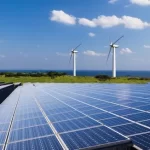When we think of technology we often overlook agriculture because it has been part of humanity since the Neolithic Revolution, a span of more than 10,000 years. Yet agriculture is intensively technological in nature and in the 21st century we are going to see dramatic changes in the way we farm and in our agricultural distribution strategies. What is driving agricultural technological advances in the 21st century?
1. The cost of energy and the transportation of agricultural products
The rising cost of fuel and energy impacts agriculture many ways. Industrial farms in North America and Europe need to find ways to reduce hydrocarbon energy dependency. The grow local movement is reinventing the very definition of what is a farm.
2. Our changing view on chemicals, fertilizers, herbicides and pesticides.
We have created both a revolution in agriculture and a potential monster in making our crop yields so chemical dependent. In saturating the soil with herbicides and pesticides we have created new varieties of resistant weeds and insects. This ongoing accelerating arms race between our technical fixes and the evolution of pests is one that we could inevitably lose with catastrophic consequences.
3. Bioengineering of crops and livestock
Bioengineering is changing the very nature of what we grow and eat. We have always been in the business of bioengineering ever since humans first changed food sourcing from being hunter-gatherers to farmers. The difference today is our bioengineering is in the laboratory and not through selective fertilization in the fields. We are now inserting genes into the DNA of plants and animals to fundamentally alter the end products. We are growing meat in the laboratory rather than on hoof. We are farming bioengineered fish rather than catching wild varieties in the open seas largely because we have overfished and exhausted natural population regeneration.
4. Climate change
Our fossil fuel dependency is altering the climate raising temperatures, causing prolonged droughts and more severe weather events. The impact on agriculture from environmental change cannot be underestimated.
5. Fresh water availability
Whether we draw water from lakes and rivers or aquifers, cities compete with agriculture for what is becoming a very precious resource. What can we do when we start reaching the limits of fresh water accessibility?
6. Human population growth
Can we continue to grow enough to feed a burgeoning human population let alone our livestock? At 7 billion today and with predictions of 9 billion by mid-century, will agricultural intensification meet our food needs. Considering today that over 1 billion people on this planet are underfed or malnourished, what will that number be at the end of the 21st century?
7. Implication of biofuels on growing food
Do we grow crops to feed our engines or are stomachs? This is a basic dilemma in countries like the United States and Brazil where corn in the former and sugar cane in the latter are both food and fuel crops. Part of the challenge lies with the practicality of moving food from where it’s grown to where it’s needed. The United States has had huge corn surpluses for years. Farmers have been paid to not grow it. A food industry has grown up built around corn byproducts just to suck up the surplus yield. Now the surplus is being used for biofuel rather than being shipped to where it can feed the hungry.
If I have missed any issue please feel free to comment. The subsequent blogs on agriculture will explore each of these topics in greater detail.















A few comments.
“Industrial” farms are actually using less fuel and labor to produce the same amount as produced in developing countries, usually over 4 times as much. Yes, they use more fuel, but they produce so much more for what is used.
Saturating the soil with herbicides, fungicides and insecticides? Get real. These products have never been used to “saturate” anything. The only thing that comes close is the use of certain “organic” pesticides that change the color of the plants they are used on. In modern agriculture these products are used at the lowest rate possible to effectively control the pest. Farmers use less pesticides, fungicides and insecticides every year, partly because of bio-engineered plants, but mostly because of newer products that do not need to be used so heavily to get the job done.
The best hope for fewer people on our planet is education of women. As more and more women are getting a good education they are having fewer children. It is projected that China, Europe and North America will actually decline in population in the coming years. Even those areas with the highest birth rates now are declining as women there are better educated.
Farmers have been, but have not for many years now, been paid not to grow crops. The surplus is gone. But the dent corn that was in surplus was never grown for human consumption. It was always grown for animal feed and industrial use. Huge crop surpluses are responsible for the migration of people away from the farm. Now that farmers are making money, maybe we can keep some of our children on the farm. With the average age of farmers at 58 years, we need young people on the farm to feed the world. Us old folks want to retire.